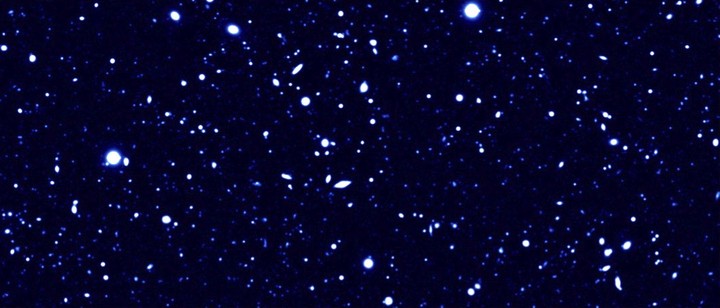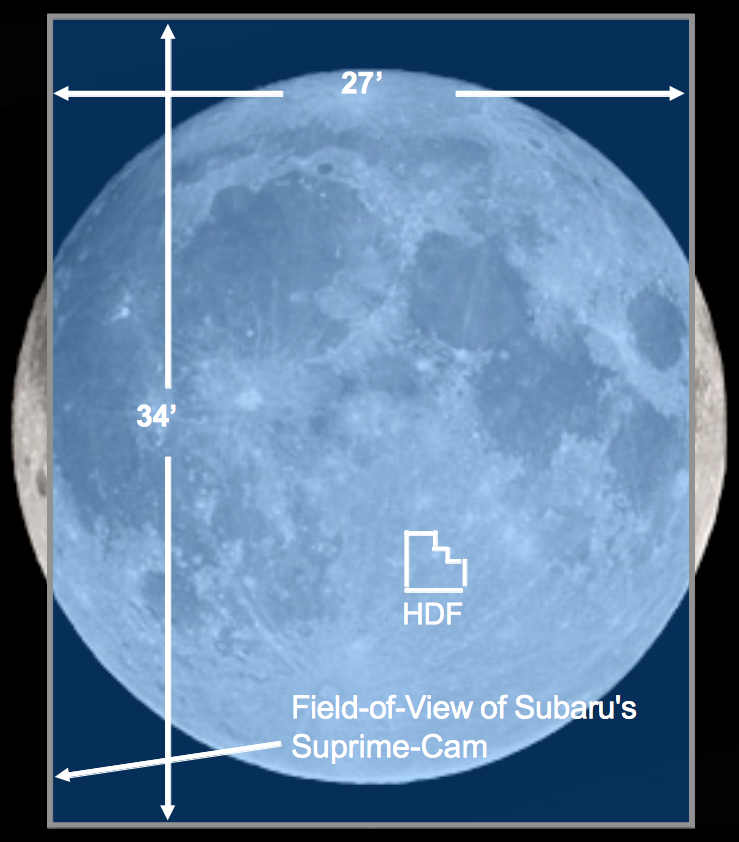Subaru Deep Field (SDF)
 Subaru Suprime-Cam deep imaging in the $R_C$-band
Subaru Suprime-Cam deep imaging in the $R_C$-band
Overview
The Subaru 8.2-meter telescope has stared for over 30 nights at one particular region of the northern sky with one of the most sensitive optical imagers in the world (Suprime-Cam) to develop the Subaru Deep Field (SDF; Kashikawa et al. 2004). This camera enables images to be taken over a large part of the sky that is comparable to the angular extent of the Moon. The large area allows us to look at hundreds of thousands of galaxies simultaneously.

Why stare for so long? To identify some of the faintest galaxies in the early universe! To do so, the survey utilized a unique technique called “narrowband imaging” to pick up emission from hydrogen and oxygen gas that reside within galaxies.

I. Luminosity Function and Star Formation Rate Density
II. Lyman Break Galaxies in the Redshift Desert with GALEX imaging
III. Census of Star-Forming Galaxies at “Galaxy High Noon”
IV. Dust Attenuation and Star Formation in Dwarf Galaxies
V.
VI. Extremely Metal-Poor Galaxies
Using the MMT, Keck, and Subaru observatories, my collaborators and I have targeted some of these faint galaxies with optical and near-infrared spectrographs. We found a rare population of galaxies that are rapidly forming at an unexpected rate. Many of these galaxies show signs of interactions with other nearby galaxies (see below). We believe that these interactions trigger the extreme bursts of star formation that we see. With detections of a very weak line, [OIII]λ4363, we were able to determine that these galaxies do not have significant heavy elements. In fact, a few of our galaxies have the most metal pristine gas seen for galaxies outside the local Universe. I am trying to understand why these galaxies have so few metals. One interpretation is that these galaxy interactions can drive new metal pristine gas into the galaxies, \making it appear “metal-poor” and fueling recent star formation. You can find more information in our paper.
VII.
This page is under construction. Stay tuned!